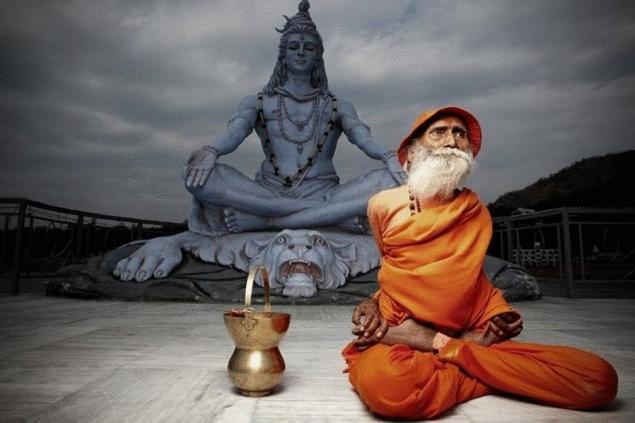500
The code of yoga: Yama-Niyama

Yoga begins, when the yogin observes the rules of self-control and morality in Sanskrit are called Yama and Niyama. If one practices Hatha yoga (or other types of yoga), and even tries to meditate, but does not comply with any of the items prescribed in Yama-Niyama rules – he can not be called a yogi, and in fact yoga is not in his life.
So if you've decided to engage in yogic practices, healing the body, mind and soul, start with the basics.
Yama-Niyama is the first stage of the Ashtanga-yoga of the eight available, about which wrote Patanjali.
Yama – the rules of morality and self control, Niyama – spiritual truths, asana – steady posture pranayama – control of breath and the nervous system, pratyahara – abstraction of the senses and the mind from worldly objects, Dharana – fixing the attention on a specific object, Dhyana – meditation and Samadhi – the highest state of meditation, enlightenment, the attainment of full consciousness transformation.
A huge number of yogic literature today reveal to us the secret of these truths and this article applies to them.
But after reading a lot of books, I came to the conclusion that all universal moral principles are not separable from yoga Goraknath, but to the existing rules of Yama-Niyama, the Nath-yogis add another five rules.
I'm not going to practice eloquence, just quote from the book of Mahant of Avedyanath "Introduction to the Natha yoga" on Yama-Niyama:
"Ten forms of Yama are: Ahimsa, Satya, Asteya, Brahmacharya, kshama, dhriti, Daya, arjava, mitahara, shaucha.
1. Ahimsa – non harm to all creatures not only actions but also thoughts and speech. This means refraining from evil feelings and actions, hostile behavior towards all people and living beings.
2. Satya – truthfulness not only in words but also in thoughts and behavior. This implies adherence to truth in every sphere of internal and external life.
3. Asteya – theft not only in action but also in thoughts and desires. In other words, the mind must be free from low desires or propensity to assign any property of any creature in any form. The pursuit of profit whatever in an inappropriate way at the expense of others is regarded as a form of theft. Such intentions must be expelled from the mind.
4. Brahmacharya – control over all sensual inclinations, especially over sexual desire, impeccable preservation of physical and mental energies. Energy should be carefully directed upward, and she must never move down to bring the enjoyment of sense objects. A man and a woman should behave cautiously in the presence of each other.
5. Kshama – forgiveness of faults and guilt of others. When spiritual practitioners caused any harm or is an insult, you should not be offended or to get revenge. Should render good for evil inflicted, and not Vice versa. Inappropriate expression of dissatisfaction or a desire of revenge over the offending.
6. Dhriti – patience and steadfastness in all circumstances. Spiritual practitioner must cultivate the power to endure adverse living conditions and all the difficulties and harassment in the way of his promotion. He must never lose heart, to worry or to let himself be intimidated in any situation, and to move steadily along its chosen path.
7. Daya – compassion for all people and other creatures who are in trouble. It means an expression of sympathy, the experience of the disasters and difficulties of the other person as their own internal motivation to provide real support to overcome adversity, to restore happiness in life and peace. The practitioner needs to cultivate universal location, a sense of unity and readiness to serve everyone.
8. Arjava – simplicity of life. Behavior should be free of artificiality, hypocrisy, insincerity. Should lead a simple life without pomp and splendor in the food, clothing and shelter, to get rid of guile in behavior. External life one needs to truthfully reflect the inner, and he must not expose himself as what he is, really.
9. Mitahara – strict regulation of supply. Practitioners must always remember that food is meant to sustain and nourish the body, and not for pleasing of the taste, the pleasure of eating and the gratification of desires. He should form the habit of taking proper food in the right quantity and at the appointed time, and not to pander to the demands of the mind and taste.
10. Shaucha – purification of body and mind. Washing various parts of the body, bathing in pure water, drinking pure water, breathing pure air, making clean food in a clean society and compliance with the rules of health and hygiene, etc. – all these procedures are required for purification of the body. Ultimately, pure thoughts, emotions, desires and inclinations should be directed to the purification of the mind.
These ten forms of self-restraint in both the external behavior and internal thoughts, feelings and desires, are called the pit and they are very important to prepare the body and mind to yogic practice.
The following ten forms of Niyama, is described as a great teacher, these are: tapas, santosha, astikya, Dana, Ishvara-pujana, Siddhanta-vakya-Sravana, HRI, Mati, japa, Huta.
1. Tapas – austerity, that is, the adoption of such a lifestyle that allows mind and body to calmly accept any changes in climatic conditions and external environment. Yogi teaches the body to safely carry the heat, cold, rain and other weather changes, to taste coarse and unpalatable food, to fast. So he harnesses all the selectivity in the preferences of the body, senses and mind. All life needs to be fine tuned.
2. Santosha – satisfaction received in the natural course of events, and voluntary waiver of the imposition of any kind of penalties on what is happening. This rule implies the preservation of vitality and calm in any situation. The mind is liberated from ambition, the desire for earthly things and envy towards those who enjoy such things. However, there should not be a sufficiency of moral and spiritual achievements. Constant commitment, along with perseverance, should promote continuous progress.
3. Astika – faith in the Vedas, gurus and all enlightened saints and sages of the past and the future. This faith must be nurtured diligently. You should free your mind from written search vices, constant doubt and unbelief. Serious practitioners must believe in the spiritual achievements of the ancient Maha-yogis and Maha-jnani, in order to develop faith in their personal skills to achieve such spiritual heights.
4. Dana – donation. Donation implies the cultivation of generosity, the opening of the heart, an experience of unity with others through the practice of alms made with compassion and humility to those who live in prosperity and good living, for the benefit of someone in need. It is a practical way of developing the spirit of sacrifice and detachment and release of the mind from attachment to earthly riches, which is the most dangerous obstacle to spiritual development.
5. Ishvara-pujana – the worship of the deity with devotion, admiration, respect and love, performed in specific forms, which are indicated in the Scriptures. This concept includes the continuous meditation on Ishvara, or the Supreme Spirit as it is of the Unchanging Self and the Absolute Ruler of the existing world order and the inmost soul of every human being and other creations, and constant remembrance of him, carried out with devotion and love. We should strengthen the belief that the world is divine, and every action is directed to the divine will. It's becoming clear to feel the majestic presence of the deity inside the heart and in all forms of space systems, and to develop the spirit residue-free abandonment to God. The worshipper should offer to God his "I" and "mine" and to think about yourself and your personal property as that which belongs to the Supreme Lord.
Ishvara has no special name or special form, and in the eternal inscrutable power of Shakti manifests itself in countless names and forms. Worship of him is possible through any favourites name and form, which can inspire the heart of the worshipper a sense of the transcendent all-pervasive spiritual presence of God, and to awaken in all its merits sincere admiration, reverence, love, and sacrifice. People are aware of the many great names that awaken the divine consciousness in the hearts of devotees belonging to different backgrounds and speak different languages. Often special forms or images associated with certain names of Deities. In the school of Gorakhnath revere all of them, recognizing Isvara, or the Supreme Spirit, all names and forms. Gorakhnath and his enlightened followers do not approve of any restrictions, bigotry or fanaticism, which, in their opinion, become a stumbling block on the path of spiritual progress.
Making the worship of the all Holy names and forms, recognized as divine in various religious societies, and seeing Isvara in each of them, teachers of Natha Yoga Sampradaya attach great importance to the name and form of Shiva. As previously mentioned, Shiva has a special Ishta-Devata, or the Chosen God of this sampradaya, as its name many years was associated with the highest spiritual ideal, achieved through yoga sadhana. The name of Shiva awakens the consciousness of Ishvara, or God perceived as the Maha-Yogesvara, Maha-Jnanesvara, Maha-Jageshwar, Maha-Prameswara, Maha-Guru is the Supreme Personality in which yoga, Jnana, prema and tyaga is eternal and perfect, Eternal Guru for all seekers of the truth. That's why yoga under Ishvara-poganoi understand first and foremost the worship of Shiva.
6. Siddhanta-vakya-Sravana – systematic hearing (studying) the Scriptures, especially the yoga-Sastras, reflection and understanding of truths that are open to them through the spiritual experience of enlightened masters. Before entering on the path of yoga, the true seeker must learn the existing views on the spiritual nature of the human soul and the basic spiritual ideas of human life, to get an idea about the true relation of the individual with the world order, the true nature of universal Reality, hidden and manifested in the world through natural experience. You need to understand the importance of yoga for perfection of body, mind, intelligence and clear consciousness, leading to the direct perception of the identity of the soul with the universal Reality, as well as the main features and stages of yoga sadhana. By the process of śravaṇa, Swadhyay and Vicary – that is, when receiving the instruction from competent teachers, a systematic study and reflection – should be cast out of mind all the inclinations and prejudices, misconceptions and prejudice, limited views, and sectarian arrogance, in order to gain sincerity and earnestness of the spirit, seeks genuine truth, goodness and beauty.
7. HRI – the feeling of shame and remorse in committing any wrong act, the slightest deviation from the path of generosity, morality and spirituality, indulging any evil thoughts, desires or feelings, uttering any abusive, evil, false, or indecent words. This means cultivating the ability to staunch opposition to any destructive influences affecting the person.
8. Mati – development of keenness of mind, a deep understanding of the subtle tendencies and divert a constant flow of empirical consciousness to the fact that has a constant spiritual value in life. The mind should be clear, reasonable and always open to truth.
9. Japa – repetition of the divine name, performed so often and continuously as possible, mentally and aloud, with deep devotion. You must believe that the divine name represents the living speech, the incarnation of God, and the repetition of the name supports the realization of the constant presence of God. For the practice of japa, it is necessary to choose one of his Holy names. Name obtained from the guru, endowed with special energy.
10. Huth (Homa) to offer the deity food, drink and subjects which are value for worshipper. This practice of daily sacrifice. Life should be sustained and multiply through sacrifice. All necessary for existence should first offer to God and only when consumed as Prasad (divine blessings).
In General, start with your consciousness!
Do not torture the body, exhausting it challenging asanas, give food to the mind, to guide the consciousness to the higher mind.
P. S. And remember, just changing your habits — together we change the world! ©
Source: h-yoga.com.ua/?p=360
Janine shepherd: a Broken body does not mean that a broken man
Writer uh, Zadie Smith: the New story always begins with enthusiasm and ends in shame























